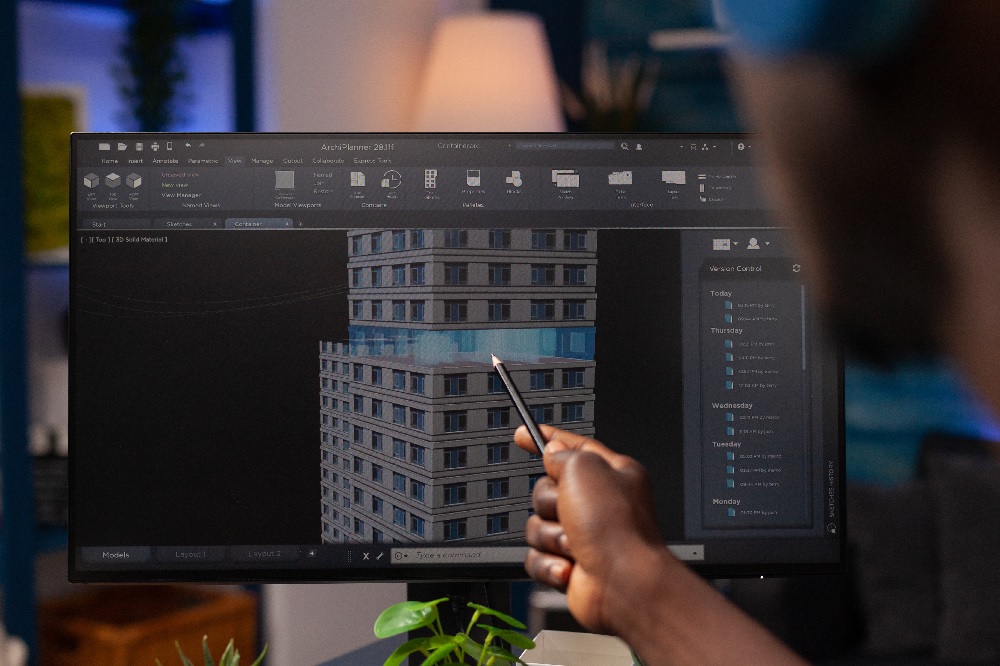
In the ever-evolving world of construction, the implementation of advanced technologies continues to push the boundaries of what’s possible. One such groundbreaking innovation is 5D BIM (Building Information Modeling). This transformative approach integrates the traditional 3D Modeling with the dimension of time and cost, offering unparalleled benefits for the construction industry. In this article, we will explore how 5D BIM revolutionizes the construction process, enhances project management, and delivers remarkable efficiency and accuracy.

Unleashing the Power of 5D BIM
Streamlined Project Planning and Design
At the heart of 5D BIM lies its ability to seamlessly integrate multiple dimensions into the construction process. By incorporating time and cost data into the 3D models, stakeholders gain a comprehensive understanding of the project’s lifecycle from conception to completion. This holistic view empowers architects, engineers, and contractors to optimize designs, identify potential clashes, and make informed decisions at every stage, thus minimizing costly rework and delays.
Enhanced Cost Estimation and Control
Traditional cost estimation methods often suffer from inaccuracies due to manual calculations and limited foresight. However, 5D BIM enables precise cost estimation by leveraging the real-time integration of cost data within the model. This data-driven approach facilitates accurate forecasting, budget tracking, and cost control throughout the construction project. Stakeholders can visualize the financial implications of design changes and explore cost-saving opportunities, promoting cost-effective decision-making and maximizing profitability.
Improved Collaboration and Communication
In a complex construction project, effective collaboration and communication are vital for success. 5D BIM fosters seamless collaboration among various project participants, including architects, engineers, contractors, and subcontractors. The centralized information repository allows real-time sharing and updating of project data, reducing the risk of miscommunication and enhancing transparency. Through improved coordination and information exchange, stakeholders can collectively tackle challenges, minimize conflicts, and ensure smooth project execution.
Accurate Resource Management and Scheduling
Resource management and scheduling are critical aspects of any construction project. 5D BIM provides a powerful platform to optimize resource allocation and scheduling, enabling stakeholders to make informed decisions regarding labor, equipment, and materials. By simulating construction sequences and analyzing potential bottlenecks, the software identifies optimal solutions, leading to enhanced productivity, reduced downtime, and timely project completion. This efficient resource management helps minimize waste, improve site safety, and boost overall project efficiency.
Increased Clash Detection and Risk Mitigation
Identifying clashes and mitigating risks is a fundamental challenge in construction. With 5D BIM, clash detection becomes an automated and integrated process. By combining 3D models with construction schedules and cost data, the software identifies clashes between different building systems, elements, or activities. This proactive approach allows stakeholders to resolve conflicts early on, minimizing rework, delays, and cost overruns. Moreover, by simulating various scenarios, construction teams can anticipate and mitigate potential risks, enhancing project safety and reducing liability.
Conclusion
The construction industry is rapidly evolving, and 5D BIM emerges as a game-changer that revolutionizes project delivery. By integrating the dimensions of time and cost into the traditional 3D Modeling process, construction stakeholders can unlock unprecedented efficiency, accuracy, and collaboration. From streamlined planning and enhanced cost control to improved resource management and clash detection, 5D BIM empowers construction professionals to optimize project outcomes and drive innovation. Embracing this advanced technology is not only a smart business move but also a testament to the industry’s commitment to excellence and progress.
Connect with us for – 3D / 4D / 5D Modeling Services
FAQ
Q: Is 5D BIM suitable for all types of construction projects?
A: Yes, 5D BIM can be applied to a wide range of construction projects, regardless of their scale or complexity. It offers significant benefits for residential, commercial, industrial, and infrastructure projects.
Q: Does implementing 5D BIM require significant investment in software and training?
A: While there is an initial investment in adopting 5D BIM software and providing training to the team, the long-term benefits far outweigh the costs. Additionally, as the adoption of 5D BIM increases, more affordable software options and training resources become available.
Q: Can 5D BIM be integrated with other project management tools?
A: Yes, 5D BIM can be seamlessly integrated with various project management tools and technologies. This allows for enhanced collaboration, data exchange, and interoperability across different software platforms.
